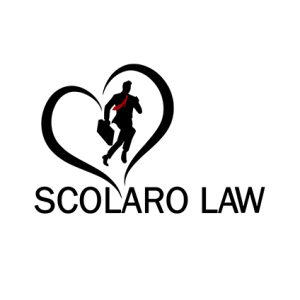Umbilical cord compression is a fairly common occurrence during pregnancy that, when severe, can lead to serious complications. In this article, we’ll define the term “umbilical cord compression” and explain how it relates to birth injury law.
Key Takeaways
- Umbilical cord compression is when the umbilical cord is flattened or compressed, restricting the flow of blood, oxygen, and nutrients to the fetus
- Causes of umbilical cord compression include uterine contractions, nuchal cord, knotted cord, and more
- Treatments for umbilical cord compression include oxygen administration, IV fluids, C-section delivery, and more
- Complications of umbilical cord compression include cerebral palsy, fetal acidosis, stillbirth, and more
- When a doctor’s failure to properly detect or respond to umbilical cord compression causes a birth injury, it is considered medical malpractice
What Is Umbilical Cord Compression?
Umbilical cord compression is when the umbilical cord connecting the fetus to the placenta is flattened or compressed, restricting the flow of blood, oxygen, and nutrients to the fetus.
Mild or temporary umbilical cord compression can be caused by the fetus’ normal movements in the womb or contractions during labor and is common, typically resolving without complications in a short time.
Severe umbilical cord compression that happens for a longer period of time can cut off the fetus’s oxygen and blood flow, often requiring emergency cesarean section delivery and sometimes causing complications such as brain damage.
Causes of Umbilical Cord Compression
Possible causes of umbilical cord compression include:
- Uterine contractions - Normal compression and squeezing from labor contractions can flatten or press against the umbilical cord
- Knotted cord - Especially if it is long, the umbilical cord can become knotted. If the knots are too tight, they can cut off the flow of oxygen to the fetus.
- Umbilical cord prolapse - If the umbilical cord drops through the cervix before the fetus does, it can cause compression
- Nuchal cord - In about 29% of pregnancies, the umbilical cord becomes wrapped around the fetus’s neck, causing mild compression
- Baby’s movement or positioning - If a fetus is hyperactive in the womb, particularly during later stages of pregnancy, it can squeeze or compress the umbilical cord
Treatment for Umbilical Cord Compression
Treatments for umbilical cord compression include:
- Oxygen administration - Supplemental oxygen can be used to regulate the fetus’s heart rate
- Switching positions - Having the birthing parent switch positions can alleviate compression and improve blood flow
- Intravenous fluids - IV fluids can help get nutrients to the fetus if the flow has been blocked by compression
- C-section delivery - If the fetus is in distress, an emergency cesarean section may be necessary
- Medications to stop contractions - Medication can be used to delay labor to give the fetus additional time to recover from umbilical cord compression symptoms
- Amnioinfusion - If amniotic fluid levels are too low, amnioinfusion of saline solution can relieve the pressure that causes cord compression
Complications of Umbilical Cord Compression
When umbilical cord compression is not treated and resolved quickly, it can cause complications. When the compression is severe enough to cut off the flow of oxygen to the fetus, even briefly, it can cause permanent damage.
Possible complications of umbilical cord compression include:
- Brain damage
- Cerebral palsy
- Fetal acidosis
- Birth asphyxia
- Hypoxic-ischemic encephalopathy (HIE)
- Intrauterine growth restriction (IUGR)
- Stillbirth
Umbilical Cord Compression and Birth Injury
If a medical professional fails to provide the necessary fetal monitoring required to properly recognize signs of umbilical cord compression, or to respond promptly and accordingly, it is considered negligence. When it results in birth injury, it is considered medical malpractice.
If your baby has experienced a birth injury because of a healthcare professional’s failure to properly detect or handle umbilical cord compression, you may be entitled to compensation for your losses. It is recommended that you speak to a birth injury lawyer to begin the process of seeking the compensation you deserve.






